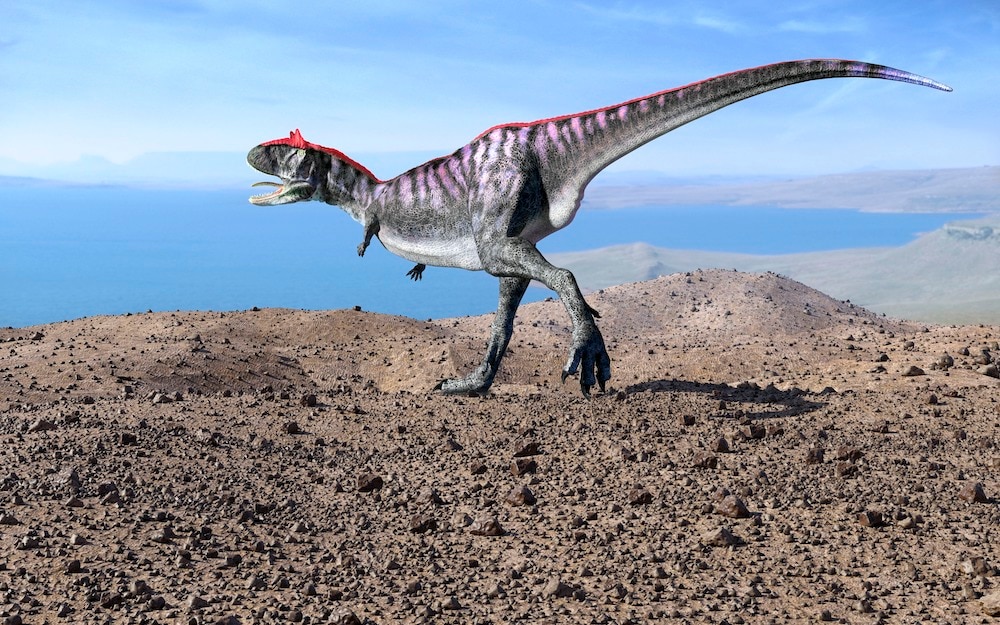Create a free profile to get unlimited access to exclusive videos, sweepstakes, and more!
Flash-osaurus? Some carnivorous dinosaurs were way faster than T. Rex
The fastest speed a human has ever reached is 27.5 mph. Some theropod dinosaurs could accelerate to 27.7 mph.

By now, we know that the scene in Jurassic Park where the T. Rex runs towards the van would have been impossible, but some carnivorous dinosaurs may have been able to chase it down.
T. rex had nothing on some its lighter and swifter competition. Maybe the supposed ruler of all dinosaurs had an uncharacteristically bumbling walk, but some three-toed theropods could have hypothetically run after you like the animatronic version of it did in the movie. You probably wouldn’t have been able to outrun them if that actually happened. The fastest speed a human runner has ever reached is 27.5 mph. These beasts could accelerate to 27.7 mph.
Footprints that were last left in the wake of these dinosaurs 145-66 million years ago showed exactly how fast they were as they streaked across what is now an archaeological site in La Rioja, Spain. Though which species the tracks belonged to is still unknown, they are fossilized proof that dinosaurs didn’t have to be gargantuan to still be downright dangerous. Paleontologist Pablo Navarro‐Lorbés, who led a study recently published in Scientific Reports, figured out how they got around.
“We estimated speeds from the tracks we had with a formula that related the hip height of the animal (calculated from footprint lengths) to the stride lengths (distance between two consecutive footprints of the same foot),” he told SYFY WIRE. "That allowed us to estimate the speed of each stride and calculate the evolution of speed along the track.”
Tracks of dinosaurs that were capable of such speeds are rare in the fossil record. Most theropods that come to mind when you think of monster flesh-eating dinosaurs had gargantuan body plans that barely made them capable of walking, let along running. It is thought that juvenile T.Rexes were much lighter and quicker on their feet before they grew up and bulked up. They probably didn’t compete with the adults for prey, but with other, smaller dinosaurs, possibly species related to those whose tracks have now been immortalized in stone.
What we do know about these mysterious footprints is that they are longer than they are wide. This dinosaur had three toes, and the axis of the foot looked as if it was formed by its middle digit, and it seems that it also put more weight on its toes than its heels. The imprints left by the toes are much deeper than those left by the heels (which are barely there in some of the tracks). The third toe was also apparently the longest. There are several trackways in the La Rioja site that show similar prints, probably made by dinosaurs of the same genus and species.
“We found examples of a smooth increase in speed, as well as maneuvering in a few steps at high speeds,” said Navarro‐Lorbés. “This indicates that these animals could modify their speeds smoothly or abruptly, but also that they had great agility and maneuvering abilities, making them very efficient predators.”
Running doesn’t need much time to burn a decent amount of energy. Even these dinosaurs would have had to save their energy, probably from their last meal, until they needed it to go after their next meal, or possibly escape a larger and more formidable predator. This is probably why evidence of these reptiles on the run is so scarce in the fossil record. The La Rioja site is also thought to have been muddy, which is not ideal for anything trying to run, but unfortunately, tracks from prehistoric creatures are best preserved in mud. That they did run, however, is just about certain.
“We compared our results with other approaches, like the generation of biomechanical models from bone and limb proportions,” Navarro‐Lorbés said. “The interesting thing about our study is that the speeds calculated from these two different approaches fit well with each other.”
It seems that the scene in Jurassic Park which would be the most accurate representation of dinosaurs like these is the one in which a herd of slim, long-legged theropods tear across a grassy field, with Alan Grant watching in awe.


























